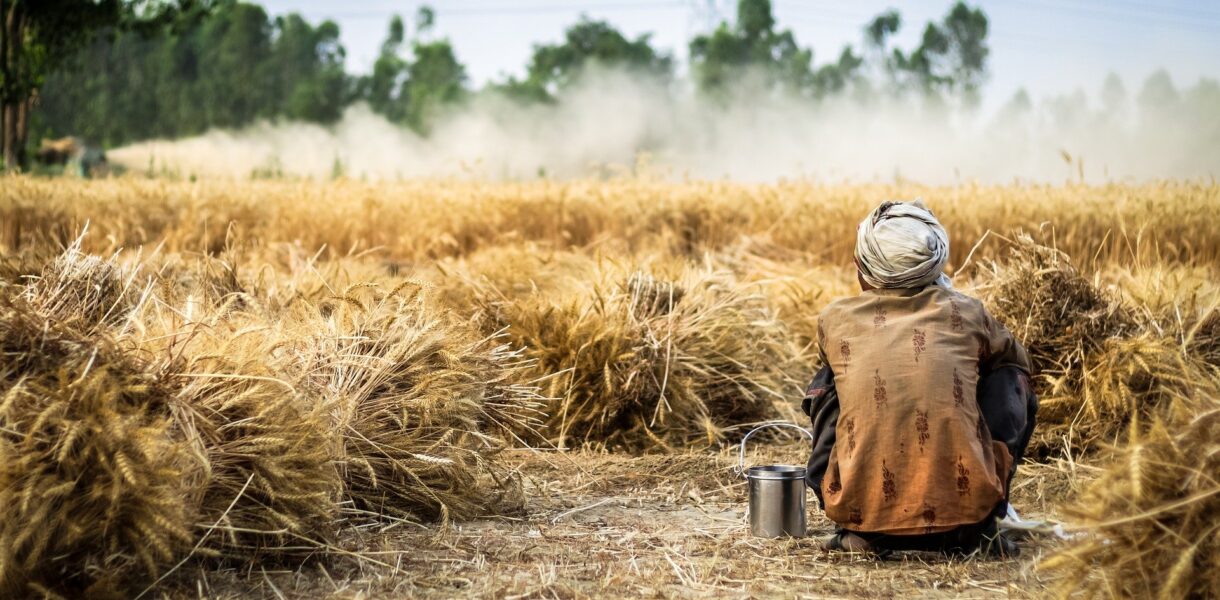
Historically known as “the land of the five rivers’’, Punjab with its rich rivers and canal networks seems like the last place where a water crisis would be underway. However, that is far from the truth. The state’s groundwater table is depleting at an alarming rate. As India becomes the largest exporter of rice in the world, Punjab plays a crucial role in achieving this feat. As one of the top[1] producers of rice and wheat, the breadbasket of the nation has generously divided its water resources, to the rest of the nation (and the world!). But this contribution comes with a cost. The cost of draining its groundwater reserves in the form of “virtual water”[2] that goes into the production of these water intensive crops.
What is the ground reality of Agriculture in Punjab?
Over the past 4 decades, the area under rice and wheat cultivation has increased from 1.18 million hectares and 2.81 million hectares in 1980-81 to 3.13 million and 3.52 million hectares in 2018-19, respectively. The area under cultivation has also increased from 71 thousand hectares to 95 thousand hectares while that of maize and cotton has significantly declined. This long view suggests that Punjab agriculture has been shifting to cultivating water-intensive crops.
Looking at the cropping pattern, the cropping intensity (ratio of the Gross Cropped Area to the Net Sown Area) has increased from 181% to about 190% over the last two decades. This means that almost the entire cropped area of Punjab is being sown more than once a year. This highlights the problem of the depletion of soil nutrients, leaving insufficient time for natural soil rejuvenation. In fact, it was observed by a recent government report that “Indian soils have been depleted to the extent that no further depletion is possible”
Thus, the diversified cropping pattern of the pre-Green Revolution era has been replaced by monoculture in the post Green Revolution period. The use of HYV seeds post GR has made agriculture highly input intensive calling for higher use of water, fertilizers, and pesticides for ensuring higher yield.
How is this requirement of increased irrigation water met?
In Punjab, only 28% of the total area is irrigated by surface water (canals) and the rest 72% is dependent on tube-wells/wells (groundwater). The availability of cheap electricity has increased the dependence on groundwater so much that in 2009 there were 11.18 lakh tube-wells working in Punjab. These tube-wells meet the agriculture, industrial and daily consumption requirements of the people of Punjab.
This huge dependence on groundwater is not the only cause to worry. Another major problem facing the people of Punjab is the quality of groundwater available. Due to constant and unchecked use of pesticides and fertilizers, the water in most areas of Punjab has been declared unfit for drinking, irrigation or any other consumption purposes. In fact, an assessment on the quality of groundwater in Punjab found water to be fit in 53% and marginal to unfit in remaining 47% of the state.
In addition, the extensive and prolonged use of surface water for irrigation purposes, without proper drainage, increases the salinity of groundwater, and causes waterlogging. Although groundwater is declining at an alarmed rate in many parts of the state, the south-western parts are facing problems of severe water logging. Some experts have termed this paradox as the “Punjab Water Syndrome[3]”. Given the above facts, one cannot help the conclusion that the current situation in Punjab agriculture is a man-made disaster, which is both systemic and deeply structured.
What is the way ahead?
Encourage Crop Diversification
Farmers should be encouraged to practice crop diversification and undertake sowing those crops which require less water. For example, cultivation of crops such as cotton, pulses, oilseeds, and nutria-cereals like jowar should be promoted, since they require lesser quantities of water. It must be remembered that some of these were the crops grown by the Punjab farmers before the Green Revolution ushered in. This diversification of cropping system can be achieved through strong state agriculture policy and incentives. Farmers should not only be given high Minimum Support Prices on these crops but there must be public procurement of these crops as well, so that they are motivated to cultivate them.
Stop Chemicals Induced Farming, Introduce Natural Farming
Farmers need to be provided alternatives to pesticides and fertilizers. It is high time that we move away from the chemicals induced farming. Concepts like Natural Farming and Permaculture need to be highlighted and encouraged to be gradually adopted among farmers in the near future. Organic farming is also one of the options which could be followed in the present circumstances. All these methods include using organic compost and green manure, stimulating the growth of microorganisms in soil, practicing crop rotation and minimizing (and gradually eliminating) the use of the agri-chemicals like chemical pesticides and fertilisers. Practicing alternative farming and crop diversification will help the land regenerate the vital nutrients needed for soil enrichment, thereby supporting the growth of good microorganisms and giving adequate time to recharge and stabilize the groundwater levels.
The good news here is that some civil Society Organizations are working in this direction, but at a smaller scale than required. One such organization is Kheti Virasat Mission, which believes in community engagement and education for practicing organic farming, not just by farmers, but the residents as well.
Better Water Management and Governance
Every little opportunity must be tapped to conserve water. And the first act should be educating people about watershed management and harvesting rainwater. Punjab receives an annual rain of 650mm, which when conserved will save 2.5 million litres of water. Integrated Watershed Management Program (IWMP) is now a national program with considerable allocations of public funds. The major strengths of this program are the focus on preservation of catchment areas, better irrigation facilities leading to significant increase in food, fruits, fodder and milk production by creation of water harvesting structures and raising the economic standard of the people under operational areas. Inevitably, as many experts have rightly pointed out, there is a need to shift focus in irrigation from construction to management, through empowering water users, introducing participatory irrigation management and improving the efficiencies of both water use and water application. Furthermore, certain effective exercises like brackish water aquaculture, on-farm water management, bio-drainage mechanisms, micro irrigation with solar energy, are a few things which can be explored in detail and then implemented.
What have we learnt?
It is time for Punjab to seriously think of cropping systems and cultivation practices involving diverse sets of crops and without high synthetic chemical application on the soil. But this can happen only with the state government’s intervention. The state, inevitably, needs to support the farmers for this shift by ensuring proper procurement prices for less water intensive crops.
Secondly, community engagement is key! Together we can learn and educate others to follow sustainable agriculture practices and water conservation methods. Remember, experiments like Sukhomajri[4] could yield positive results only because the village could come together as a community to conserve the water and use it judiciously.
Hopefully, if these practices are adopted, we would be able to see the luscious green fields of Punjab swaying in the wind and with no threat to the quality and the level of groundwater.
About the Author:
Simran is a young researcher and strong advocate for environment protection. She has completed her Bachelor of Commerce from University of Delhi followed by the Young India Fellowship from Ashoka University.
This article first appeared in the Water Practitioners Network website on September 14, 2020.
Photo Credits: mybigplunge.com
Endnotes
-
http://agricoop.gov.in/sites/default/files/agristatglance2018.pdf ↑
-
https://www.eni.com/en-IT/low-carbon/concept-of-virtual-water.html#:~:text=Virtual%20water%20is%20the%20water,produce%20a%20ton%20of%20beef. ↑
-
https://www.epw.in/journal/2013/52/review-rural-affairs-review-issues/punjab-water-syndrome.html ↑
-
https://www.downtoearth.org.in/indepth/sukhomajri-at-the-crossroads-22807 ↑





I think this is among the most vital information for me.
And i’m glad reading your article. But wanna remark on few
general things, The web site style is ideal, the articles is really nice
: D. Good job, cheers
It’s awesome to visit this website and reading the views of all mates on the topic of this article, while I am also eager of getting knowledge.